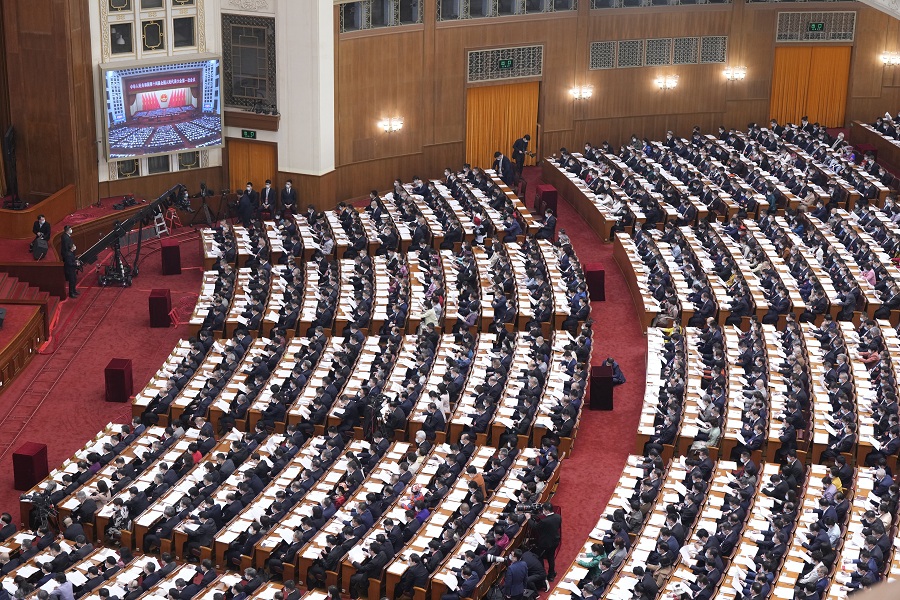Harvesting Asian Prosperity Together

As early as 1955, agronomic diplomacy emerged in India-China exchange: Eight mango saplings that India gifted to China were planted in the latter’s southern region. Mr. Nedyam Raghavan, then Indian ambassador to China, devised the plan for an important reason: The mango is the pride of India, but was yet unknown to its neighbor across the Himalayas. Agricultural exchange has been cementing the foundation for stronger trade ties and bilateral relations ever since.
Agro-Power
Agriculture serves as the backbone of both Indian and Chinese economies. Both countries started to pave paths into the world market atop similar terrain. The two countries harvested the finest produce which attracted numerous European merchants. Since the early 18th century, India has been one of the world’s largest spice exporters, and China has been the world’s leading rice, corn, and tea producer. Before the British arrived on the Indian coast, India had already been exporting massive volumes of cash crops such as tobacco, cotton, and indigo, in addition to spices and woven cloth. European merchants would queue for Indian agricultural products in those days. Marco Polo, a Venetian traveler and merchant, traversed China to promote trade. Many are familiar with Marco Polo’s stories and the incredible things he witnessed in China. His account became a cornerstone for long-lasting friendship between Europe and China.
Back then, whether along the Silk Road or the Spice Road, agricultural trade was regarded as one of the most influential factors in global GDP.
In the 21st century, some countries have been engaged in political disputes with each other, and government policies can have a huge impact on trade. Despite bilateral political divergences, India remains one of China’s most prominent trading partners. During the fiscal year 2021-22, the two Asian powerhouses registered bilateral trade of about US$115.42 billion.
Today, India imports fertilizer, equipment, electronics, heavy machinery, and other essential items from China while exporting iron ore, copper, aluminum, diamonds, and natural gems. Its contributions through agricultural commodities are significant. India exports grapes, mangoes, soybeans, moringa powder, and many other commodities to China, and castor oil is one of the most popular oil exports. Fisheries are also a prominent contributing factor in trade figures, with shrimp as the most important aquatic product exported by India to China. Agricultural exports from China to India include fresh apples, kidney beans, animal feed and its components, bamboo, wheat gluten, and active yeast.
Simply put, agricultural economies thrive when their products are in high demand. India and China are capable of generating vast demand due to large populations and increasingly consumer-centric tastes.
Looking Ahead
The trade along the ancient Silk Road brought prosperity to countries along the route, and strengthening trade ties today will undoubtedly restore the economic prosperity sought by both India and China.
India exports fermented and partially fermented tea to China, which provides an excellent opportunity for tea growers in Assam and Kerala to monetize their products on the global scale. Castor oil remains a top contender for trade and will most likely rank as India’s biggest export to China in 2023. Even during the COVID-19 pandemic, India’s exports of agricultural products multiplied. Based on data and policy from the Indian government, commodities such as pimientos, cuttlefish, groundnut oil, and crabs have potential to increase opportunities for bilateral trade.
In the international landscape, the paradigm shift from the West to the East has already begun. Now, more than ever, is the time for India and China to seize every opportunity. The Belt and Road Initiative has brought significant changes to trade policies and agreements, increasing sea traffic across South and Southeast Asia. The time has come for India and China to capitalize on their heavy production of agricultural commodities to sustain stronger trade.
As Asia’s two largest developing countries, India and China should work together to improve Asian livelihoods and restore the past glory of the ancient Silk Road. From the “Harit Kranti” movement to the “Dhawal Kranti” movement, India has seen tremendous growth in agricultural production. The agricultural sector was also highlighted in the government work report delivered at the opening of the first session of the 14th National People’s Congress in Beijing. China has vowed to advance agricultural production as part of rural modernization.
Growing agricultural links foster the potential for India and China to boost not only bilateral trade but also global commerce.
The author is director of business solutions provider Ewan based in Pune, Maharashtra, and a seasoned Chinese-English simultaneous interpreter who has been an avid observer of Sino-Indian relations.